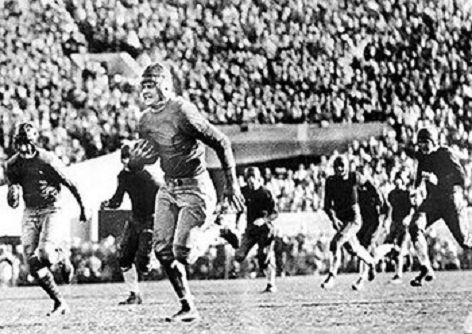


| Utah State (5-3-1) |
40-12 |
|
| Oregon State (6-3) |
19-0 |
#6 |
| St. Mary's (5-4) |
19-6 |
|
| at California (6-2-2) |
0-0 |
#3 |
| Occidental (7-2) |
19-0 |
|
| Stanford (8-3-1) |
10-0 |
#4 |
| Arizona (5-1-2) |
78-7 |
|
| Washington State (7-3) |
27-13 |
#23 |
| Idaho (3-4-1) |
28-7 |
|
| Notre Dame (5-4) |
27-14 |
#15 |
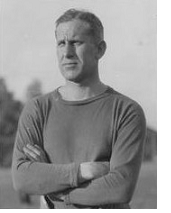 Southern
Cal began its move to the big time with the arrival of head coach Elmer
"Gloomy Gus" Henderson after WWI. 1919-1924 he went 45-7, giving him the best
winning percentage of any coach in USC history, and he won the 1923
Rose Bowl 14-3 over Penn State, but he lost every year to California's
"Wonder Teams," so he was fired. This despite the fact that no one beat Cal for 5 straight years 1920-1924. Gus Henderson moved on to Tulsa, where he
won 5 conference titles in 11 years. But unlike his successor at USC,
he is not in the Hall of Fame.
Southern
Cal began its move to the big time with the arrival of head coach Elmer
"Gloomy Gus" Henderson after WWI. 1919-1924 he went 45-7, giving him the best
winning percentage of any coach in USC history, and he won the 1923
Rose Bowl 14-3 over Penn State, but he lost every year to California's
"Wonder Teams," so he was fired. This despite the fact that no one beat Cal for 5 straight years 1920-1924. Gus Henderson moved on to Tulsa, where he
won 5 conference titles in 11 years. But unlike his successor at USC,
he is not in the Hall of Fame.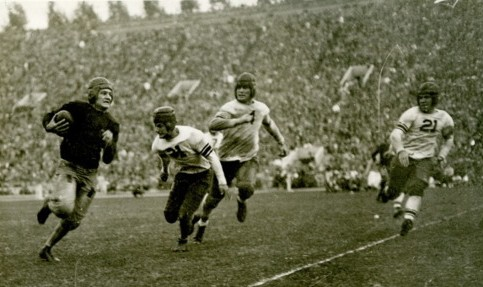
| VMI (5-3-2) |
13-0 |
|
| at Tulane (6-3-1) |
12-0 |
|
| Notre Dame (5-4) |
13-0 |
#15 |
| at North Carolina (5-3-2) |
20-7 |
|
| Oglethorpe (3-5-1) |
32-7 |
|
| Vanderbilt (8-2) |
19-7 |
#19 |
| Alabama (6-3) |
33-13 |
(#26-32) |
| Auburn (1-8) |
51-0 |
|
| Georgia (4-5) |
20-6 |
|
| Rose Bowl California (6-2-2) |
8-7 |
#3 |
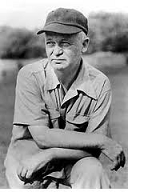 Georgia Tech had
previously won a national championship in 1917
under Hall of Fame coach John Heisman. Another
Hall of Fame coach, William Alexander (pictured), succeeded him in
1920, and he went 134-95-15 through 1944, winning 5 Southern Conference
titles and 3 SEC titles. Alexander had played for Heisman at Georgia
Tech, and he was the valedictorian of the Class of 1912. Georgia Tech's
basketball arena is named for him. Alexander was succeeded by Hall of
Fame coach Bobby Dodd, giving Georgia Tech 3 straight coaches who
brought home a national championship. The 3 coaches, Heisman,
Alexander, and Dodd, spanned 63 years of Georgia Tech football,
1904-1966. In sharp contrast, the school has had 11 head coaches in
48 years following Dodd's retirement.
Georgia Tech had
previously won a national championship in 1917
under Hall of Fame coach John Heisman. Another
Hall of Fame coach, William Alexander (pictured), succeeded him in
1920, and he went 134-95-15 through 1944, winning 5 Southern Conference
titles and 3 SEC titles. Alexander had played for Heisman at Georgia
Tech, and he was the valedictorian of the Class of 1912. Georgia Tech's
basketball arena is named for him. Alexander was succeeded by Hall of
Fame coach Bobby Dodd, giving Georgia Tech 3 straight coaches who
brought home a national championship. The 3 coaches, Heisman,
Alexander, and Dodd, spanned 63 years of Georgia Tech football,
1904-1966. In sharp contrast, the school has had 11 head coaches in
48 years following Dodd's retirement.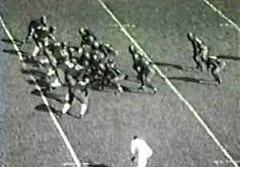 Notre Dame came to Atlanta the
next week to provide Georgia Tech
with a landmark win. The 2 teams had been playing annually since 1922,
and Notre Dame was 6-0 in the series, winning every game by more than a
touchdown, including a 26-7 beatdown to give Tech their only loss the
previous season. This time, Georgia Tech drove to a touchdown in the
game's opening minutes, Warner Mizell catching a 14 yard pass, throwing
an 11 yarder, and running for the score. Soon afterward, Georgia Tech
fullback Bob Randolph got loose for a long run that carried inside the
Notre Dame 5 yard line, but then Tech was stopped on downs.
Notre Dame came to Atlanta the
next week to provide Georgia Tech
with a landmark win. The 2 teams had been playing annually since 1922,
and Notre Dame was 6-0 in the series, winning every game by more than a
touchdown, including a 26-7 beatdown to give Tech their only loss the
previous season. This time, Georgia Tech drove to a touchdown in the
game's opening minutes, Warner Mizell catching a 14 yard pass, throwing
an 11 yarder, and running for the score. Soon afterward, Georgia Tech
fullback Bob Randolph got loose for a long run that carried inside the
Notre Dame 5 yard line, but then Tech was stopped on downs.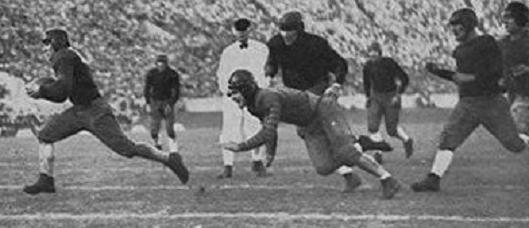
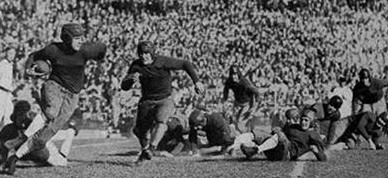
| Southern Cal 9-0-1 | Georgia Tech 10-0 | |||||||||||||||||||||||||||||
|---|---|---|---|---|---|---|---|---|---|---|---|---|---|---|---|---|---|---|---|---|---|---|---|---|---|---|---|---|---|---|
|
|
|||||||||||||||||||||||||||||
| 1) Sagarin-ELO (math system) | 3.98 |
| 2) Boand (math) | 3.74 |
| 3) College Football Researchers Association | 3.67 |
| 4) Helms |
3.46 |
| 5) Houlgate (math) | 3.26 |
| 6) National Championship Foundation | 3.24 |
| 7) Sagarin (math) | 3.06 |
| 8) Poling (math) | 3.02 |
| 9) Parke Davis | 2.79 |
| 10) Dickinson | 2.52 |
| 11) Billingsley (math) | 2.17 |
| 1) Houlgate (math system) | 4.5 |
| 2) Helms | 4.3 |
| 3) Parke Davis | 4.2 |
| 4) National Championship Foundation | 3.7 |
| 5) Billingsley (math) | 3.6 |